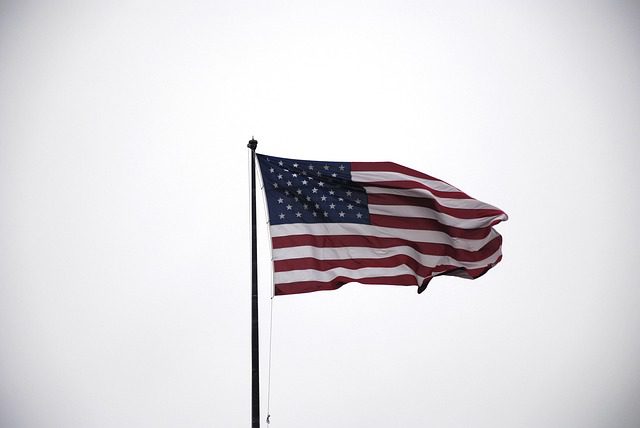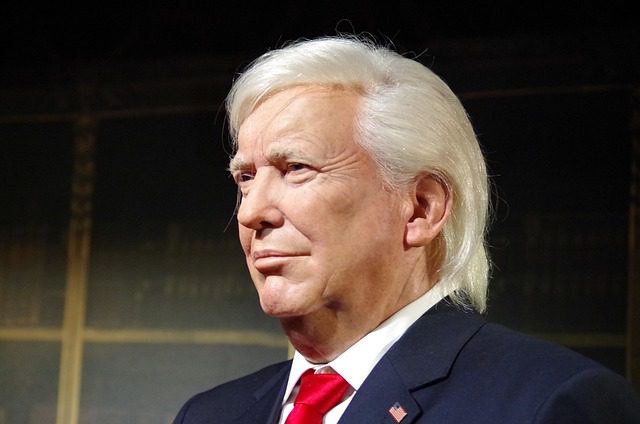The Political Weight of Student Loan Forgiveness
In the United States today, student loan debt looms large-an albatross around the economic neck of millions. It is estimated that over 40 million Americans carry federal student loan balances; such magnitude underscores the systemic weight of the problem.
What began as a financial lifeline for countless students has evolved into a deeply politicised issue: forgiveness, cancellation, and reform are now potent battlefields in Washington.
Against that backdrop, Donald Trump’s renewed interest in the question of student-loan relief has brought fresh scrutiny and debate. His stance is drawing attention not merely because of the numbers involved, but because the contours of forgiveness reflect broader questions of fairness, fiscal responsibility, and public priority.
The Historical Context of Student Loan Forgiveness

source : https://pixabay.com/photos/mentor-school-students-college-3512369/
To understand today’s policy debates, we must trace the evolution of federal student-debt initiatives. Federal student loans grew significantly during the late twentieth and early twenty-first centuries, with repayment and forgiveness programs added to assuage borrower distress.
Under Trump’s first administration, higher-education reform emphasised accountability and institutional responsibility, tweaking but not wholly upending existing forgiveness frameworks.
In contrast, the Joe Biden era pursued more expansive forgiveness efforts—broader cancellation, aggressive outreach, and major programmatic changes. Comparing the two approaches highlights a fundamental shift: from incremental reform to sweeping relief.
Trump’s Position on Student Loan Forgiveness
Donald Trump has made various public statements and policy proposals regarding debt relief. He has asserted that forgiveness must be balanced with accountability and that taxpayers should not be unduly burdened by mass cancellations.
During the 2024 campaign trail and beyond, his rhetoric stressed a return to “responsible” servicing, stricter eligibility standards, and a focus on restoring repayment rather than broad forgiveness.
Within the GOP itself, however, there is an ideological divide: some Republicans continue to support targeted forgiveness (especially for public service workers), while others strongly oppose cancellation of any kind. Trump’s stance sits at the intersection of these competing visions.
Key Proposals Under Trump’s Education Agenda
One of the hallmark ideas in his agenda is simplifying federal loan repayment options. Fewer plans, clearer rules, less confusion—this is the simplification promise.
The so-called “one income-driven repayment plan” proposal encapsulates this approach: consolidate multiple IDR (income-driven repayment) plans into a unified model, making it easier for borrowers to navigate.
At the same time, the agenda shifts emphasis from outright forgiveness to accountability and transparency—borrowing must be fair, institutions must bear responsibility, and taxpayers must know what they are financing.
The Role of Betsy DeVos in Shaping Trump’s Student Loan Policies

source : https://pixabay.com/photos/usa-flag-american-flag-banner-1561757/
In the Trump administration, Betsy DeVos played a pivotal role in defining borrower defense, institutional oversight, and regulatory enforcement. She retooled rules governing when students could claim relief due to institutional fraud or misrepresentation.
Her tenure was marked by controversies—loan servicing problems, for-profit college scrutiny, and criticism that protections for borrowers were weakened
The long-term effects of DeVos-era regulations continue to ripple: fewer automatic relief claims, stricter documentation requirements, and a shift in institutional behaviour.
Borrower Defense to Repayment: A Policy in Flux
“Borrower defense” offers students who were misled by their institutions a route to have their loans forgiven. In practice, however, its evolution has been turbulent. en.wikipedia.org+1
Under Trump, eligibility standards for borrower defense were tightened—making it harder for borrowers to qualify and raising more evidentiary hurdles.
At the same time, legal battles and administrative reversals have left the policy in flux: many borrowers remain in limbo, awaiting decisions or processing delays.
Income-Driven Repayment and Trump’s Adjustments
IDR plans—where payments are tied to income rather than debt level—have been central to the U.S. student-loan system for years.
Trump’s reform path sought to consolidate the myriad of IDR options into fewer, simpler alternatives. For example, the “Repayment Assistance Plan (RAP)” or other consolidated models appeared. EL PAÍS English+1
The impacts differ by income: middle-income borrowers may face higher monthly payments under simplified plans, while low-income borrowers may gain clarity but potentially lose more generous terms. It’s a recalibration of burden and benefit.
Public Service Loan Forgiveness (PSLF) Under Trump
The Public Service Loan Forgiveness (PSLF) program offers remarkable relief: full loan discharge after 10 years of qualifying public-service employment. Under Trump, the administration evaluated how effectively the program truly supported public servants. Investopedia+1
However, new barriers emerged for teachers, nurses, non-profit workers—particularly around employer eligibility and definitions of “public service.”
Looking ahead to potential Trump-era reforms (2025 onward), borrowers should anticipate tighter definitions, fewer exemptions and new employer-eligibility criteria.
For-Profit Colleges and Student Protection
During the Trump administration, regulatory leniency toward for-profit colleges raised alarms among consumer advocates. These institutions often carried higher costs and lower outcomes for students.
Several high-profile cases spotlighted predatory education practices—misleading recruitment, poor job placement, heavy debt burden.
Any future policy reversals could shift the balance: more aggressive borrower protections, or alternatively, reduced oversight—both of which carry consequences for students who enroll in vocational or non-traditional institutions.
Private vs. Federal Student Loans: A Shifting Balance

source : https://pixabay.com/photos/people-woman-girl-reading-book-2593394/
Traditional federal loans dominate the higher-ed landscape, but changes under Trump may influence a resurgence of bank-based/private student lending.
If the federal program becomes more restrictive (fewer forgiveness options, tighter repayment plans), private lenders may attempt to fill gaps—but with higher risk and less protection for borrowers.
This shift presents both risks (less regulation, higher cost) and rewards (potential new options), but it demands caution from borrowers who may be drawn into less-favourable arrangements.
The Economic Argument Against Mass Forgiveness
Trump’s fiscal rationale for opposing sweeping debt cancellation hinges on three pillars: inflationary risk, taxpayer burden, and fairness to non-borrowers.
Broad forgiveness, critics argue, may fuel inflation—or at least shift costs onto taxpayers who never went to college. There is a question of whether it is equitable for borrowers who paid back loans or never took them out.
When comparing economic impacts of different policy paths (targeted forgiveness, full cancellation, no cancellation), the cost-benefit calculations are complex—but Trump’s camp clearly prioritises restraint and structured relief.
What Trump’s Return Could Mean for Borrowers Today
If Trump returns to power or his policy framework remains influential, borrowers should brace for changes. Repayment structures might be adjusted, and forgiveness eligibility may be tightened.
Some Biden-era measures might be rolled back—especially broad cancellation initiatives—creating uncertainty for those banking on relief.
Furthermore, servicer oversight may increase, and interest rates or collection practices could shift, meaning borrowers need to stay alert and proactive.
Legal and Legislative Hurdles Ahead
Congress plays a central role: forgiveness programs typically require statutory authority or regulation that meets legal muster. Without congressional action, executive power alone may be insufficient.
Supreme Court decisions—such as those around the limits of the executive branch in student-loan forgiveness—have already shaped policy. AVMA+1
Executive authority is constrained: even with orders from the president, meaningful forgiveness often requires legislative backing or regulatory rule-making, both of which can be contested.
Trump’s Vision for Higher Education Funding
In many of his proposals, Trump shifts responsibility from federal relief toward institutional accountability. Colleges are asked to justify outcomes; students bear responsibility for informed choice.
His agenda encourages trade schools and alternative education paths—apprenticeships, vocational training—which cost less and often lead to employment faster.
He also seeks to redefine what “affordable education” means: less emphasis on tuition subsidies and more on value and institutional performance.
Student Reactions and Public Opinion
Borrowers themselves are not monolithic: some feel betrayed by policy shifts, others applaud the emphasis on repayment. For example, one borrower expressed “buyer’s remorse” after voting for Trump only to face renewed collections. Business Insider
Generational divides matter: younger savers and students may favour forgiveness more strongly than older borrowers who are farther along in repayment.
On social media, discussion of student-loan politics is intense—hashtags proliferate, forums debate policy minutiae, and misinformation abounds. Borrowers must navigate not just policy changes, but the noise.
Comparison with Biden and Other Political Figures
Juxtaposing Trump’s approach with Biden’s relief-heavy agenda clarifies the contrast: Biden leaned into sweeping cancellation and leveraging government power to reduce debt; Trump leans toward restraint, repayment, and structural reform.
Within the Republican field, some leaders flirt with forgiveness for specific groups (veterans, public servants), while others oppose any form of debt cancellation—highlighting intra-party tension.
Potential bipartisan solutions remain elusive: gridlock looms, but there’s growing recognition that some corrective measures (e.g., better income-driven plans, improved servicer oversight) may find cross-party support.
Impact on the Future of Higher Education
The ripple effects of loan-policy changes will reach far: enrollment patterns may shift if borrowing becomes more difficult; tuition pricing may respond accordingly.
Institutions will behave differently under reduced federal oversight or tighter regulations. Schools might adopt more conservative financial aid models, or question the sustainability of high-cost majors.
Student-aid priorities may evolve: we may see more funding for workforce training, community colleges, and non-traditional pathways, reflecting the policy tilt toward value and efficiency rather than sheer access.
Financial Planning for Borrowers in a Changing Policy Landscape
For borrowers, preparation is vital. Consider the possibility of policy reversals: don’t rely solely on forgiveness as a repayment strategy. Instead, build a contingency plan.
Smart repayment strategies include staying current on payments, enrolling in the most advantageous plan now, and staying informed about policy changes that could affect eligibility.
Protecting yourself from misinformation and scams is crucial—fraudsters prey on confusion around forgiveness programs. Only use official resources and verify any third-party offer.
Expert Opinions and Economic Forecasts
Economists and policy analysts are deeply divided on the feasibility of Trump’s proposals—some argue his emphasis on repayment and streamlining is prudent, others say it will disadvantage vulnerable borrowers.
Loan servicers and lenders are likewise adjusting expectations—fewer forgiveness claims means more emphasis on collection mechanisms and tighter servicing standards.
Education-policy analysts forecast that 2025 and beyond could be a transitional period: borrowers will see fewer sweeping relief options and more incremental reforms, with big policy shifts still contingent on legal and legislative outcomes.
Conclusion: The Uncertain Road Ahead for Student Loan Forgiveness
The debate over student-loan relief is far from over. It remains a battleground of values: fiscal responsibility versus social equity; taxpayer fairness versus borrower relief.
Balancing those imperatives will be the central challenge—how to craft a system that is fair to borrowers and nondisruptive for taxpayers.
For every student, graduate, and borrower: pay attention to the policy horizon, stay informed, understand the shifting rules, and prepare for whatever changes 2025 and beyond bring.




